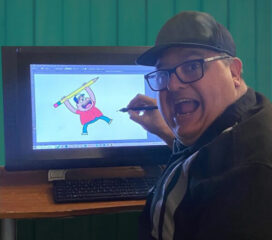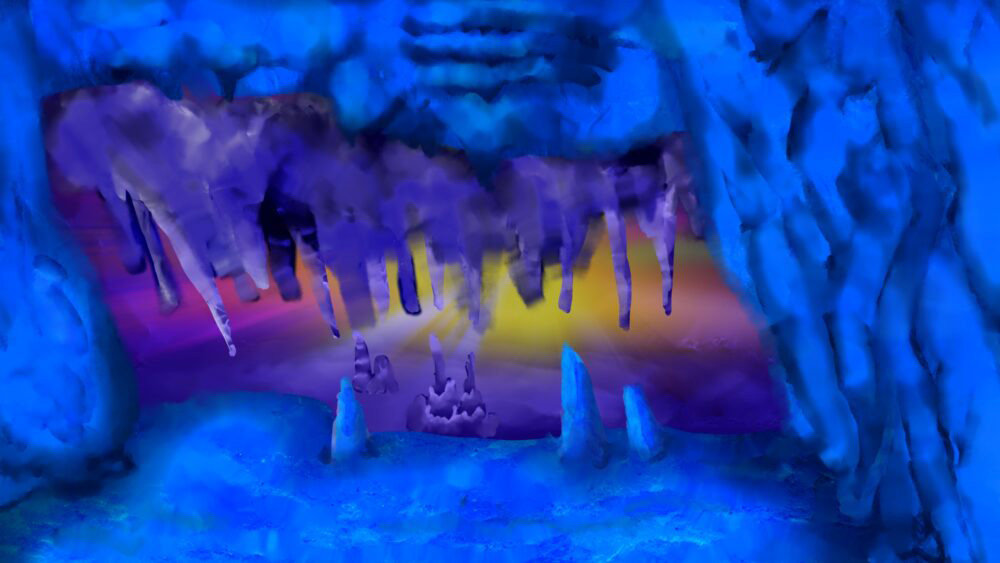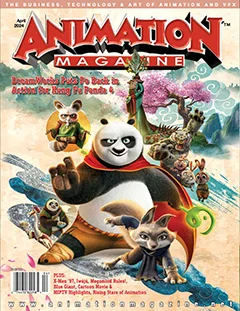|
Getting your Trinity Audio player ready...
|
For the past few years, Torrance, Calif.-based CLU Transitions program has trained talented artists and animators on the autism spectrum to engage as 21st century working professionals. The artists at the program’s companion studio Brainstorm Productions have been working on an animated project titled Dreams Anthology, which is slated to debut on the studio’s YouTube Channel in April.
We chatted with the project’s consulting producer, animation veteran Bob Harper (co-creator of Prank Boy and animator on Foster’s Home for Imaginary Friends, Lalaloopsy, among others) who gave us a better understanding of this special anthology.

Animation Magazine: Can you tell us a bit about the Dreams Anthology project and how it call came to be?
Bob Harper: The Dreams Anthology grew from observing the animators at Brainstorm Studio display their passion and excitement to work in animation which was their dream. They all have a voice that is often overlooked in the industry and have stories to tell which more often never get heard. This is their opportunity to share with the world what is on their minds.
When was it launched and how many people are working on it?
We began the initiative in November after the studio finished wrapping up the music video project Purple Frog for singer/songwriter Tim Myers, which premiered at the San Pedro Independent Film Festival. Building on the confidence for a job well done, we decided that the next big project should be more personal and reflective of the studio. There are presently 16 animators who are working on the anthology.
What was the criteria and goals of this project?
Each animator was given the prompt of what Dreams meant to them. They were then tasked to create a short, based on their interpenetration of the theme. They were given creative freedom with the only direction to make if G or PG rated. Toon Boom Storyboard Pro was used for boarding and animatics, while Adobe Creative Suite was used for animation and post.
Why do you think this project is an important venture and we need to have more ventures like this happening?
In this age of inclusion, one population that still has very little representation is the neurodiverse population. More often than not, if these artists are offered any opportunity in the industry, it is usually in a support role. We know these animators can write, direct and produce their own stories and they deserve a platform to be seen and heard.
How is it different from other similar types of projects?
We are delivering nine unique shorts, each written and directed by a neurodiverse animator who also supervised the production with their fellow animators as well as neurotypical staff members who served as support. Ultimately they all learned teamwork and leadership skills and truly finding their creative voices.

What was your biggest challenge?
Scheduling was our biggest challenge, as each animator works at a different pace, and many of them are discovering their limitations as well as what they excel at.
What are you proudest of?
I love seeing the passion they all put into their art. Seeing them flourish and grow not only as artists but as young adults who are becoming more confident in their abilities, but more importantly confident as people, is truly awe-inspiring.
How do you plan for the public to view this anthology?
We will be debuting them on our YouTube channel throughout the month of April to celebrate Autism Awareness/Acceptance month and then we hope to submit the collection to meaningful festivals afterwards.
For more information, visit brainstormproductions.org.













 Win a Funko X Lilo & Stitch Prize Pack!
Win a Funko X Lilo & Stitch Prize Pack! 

